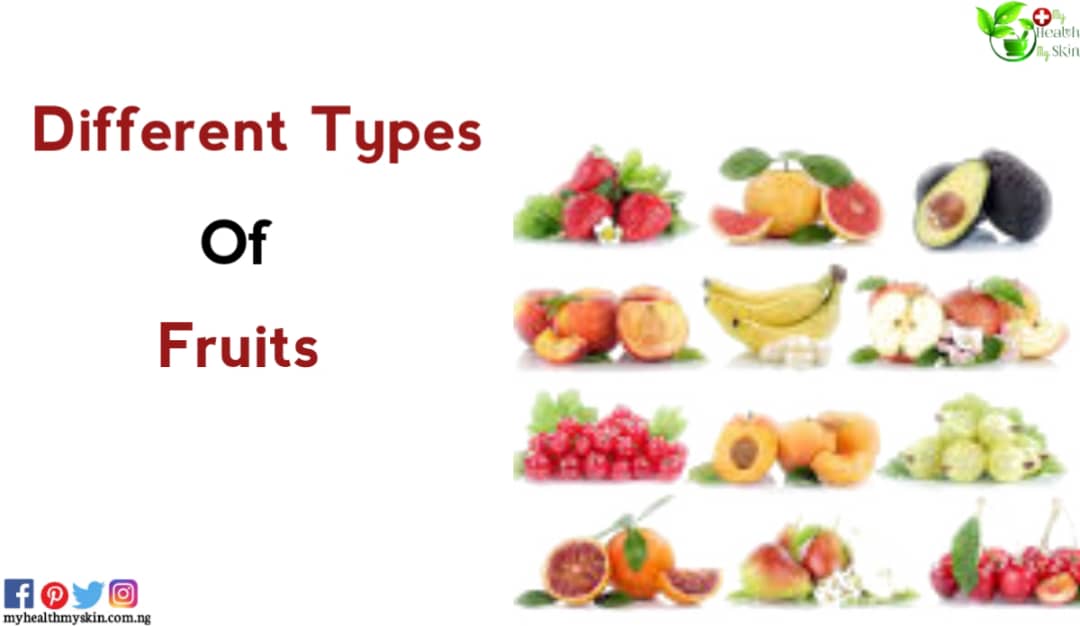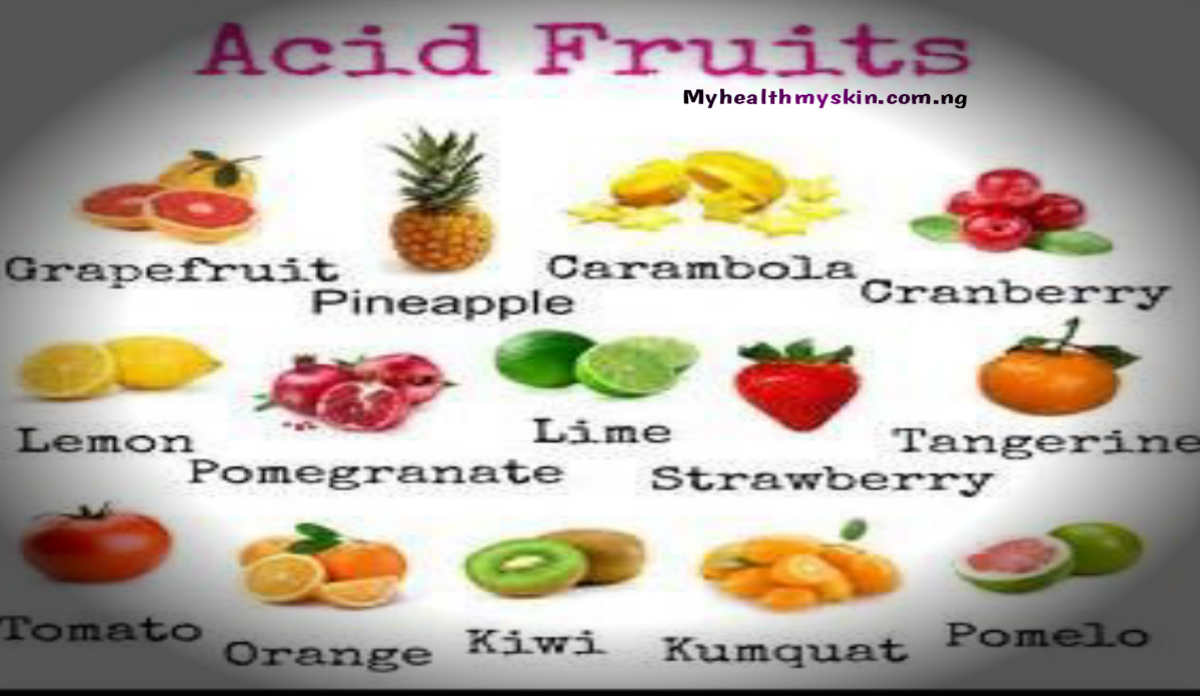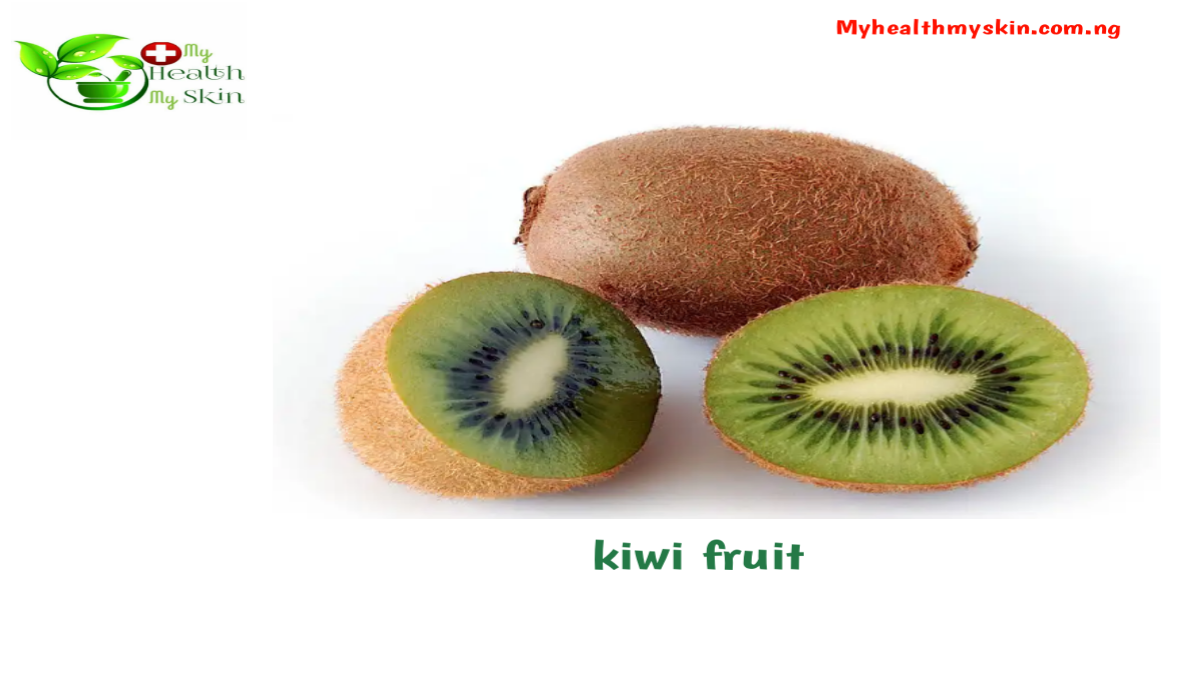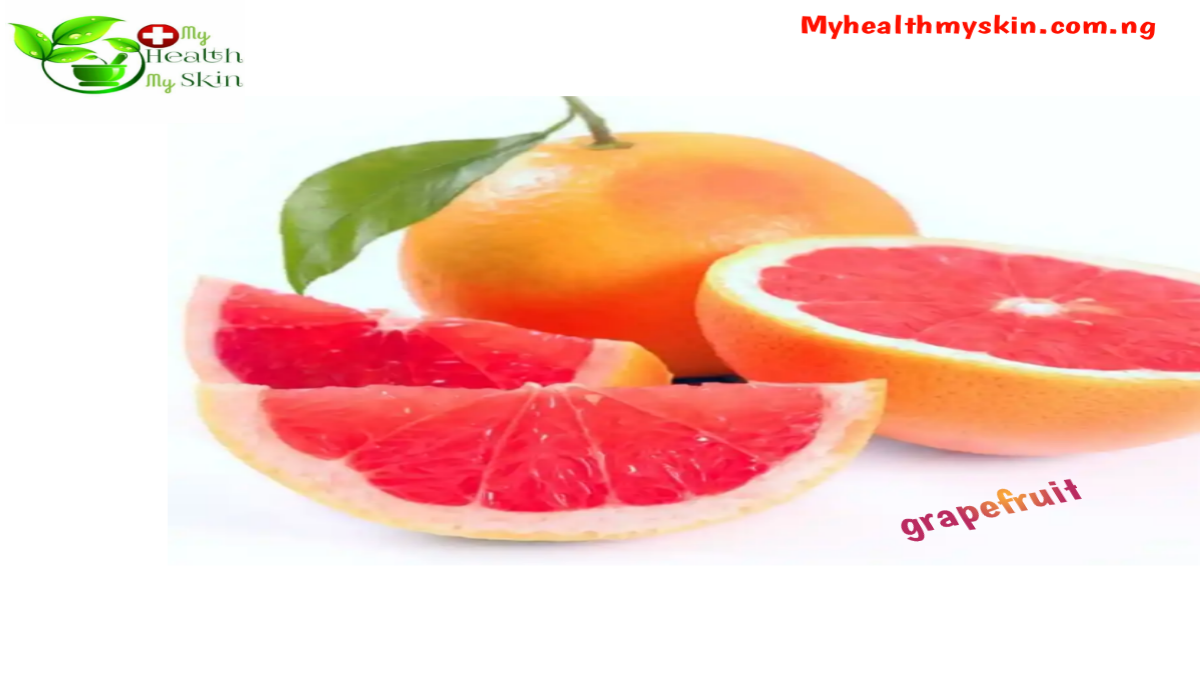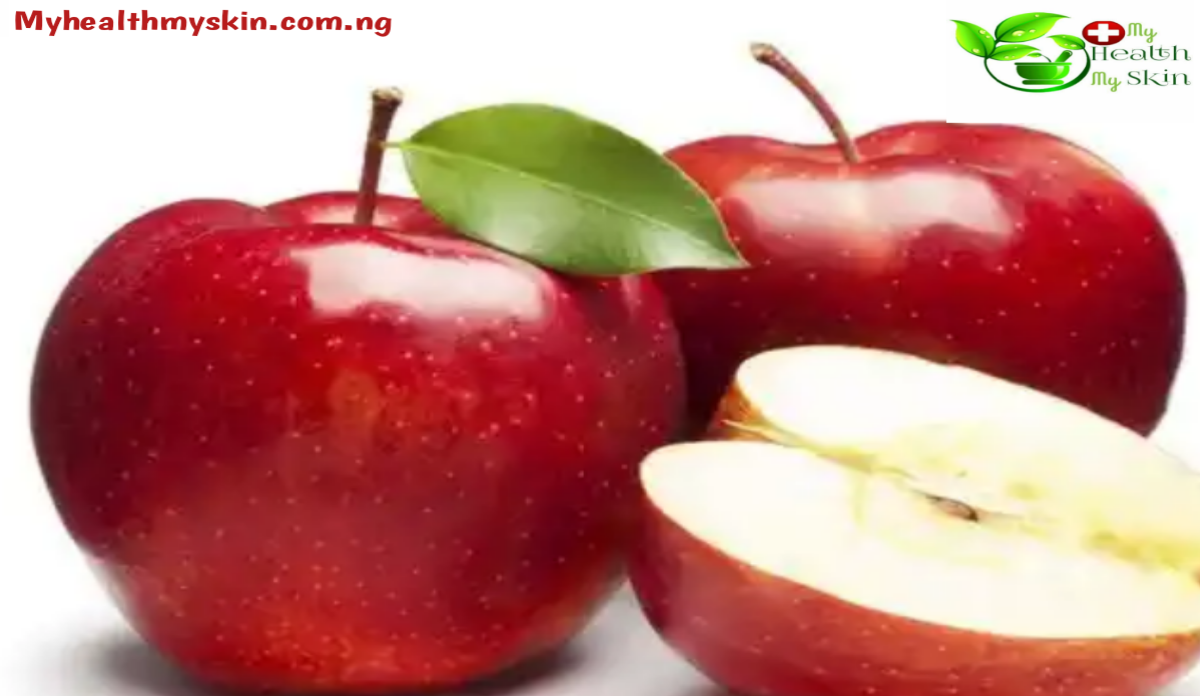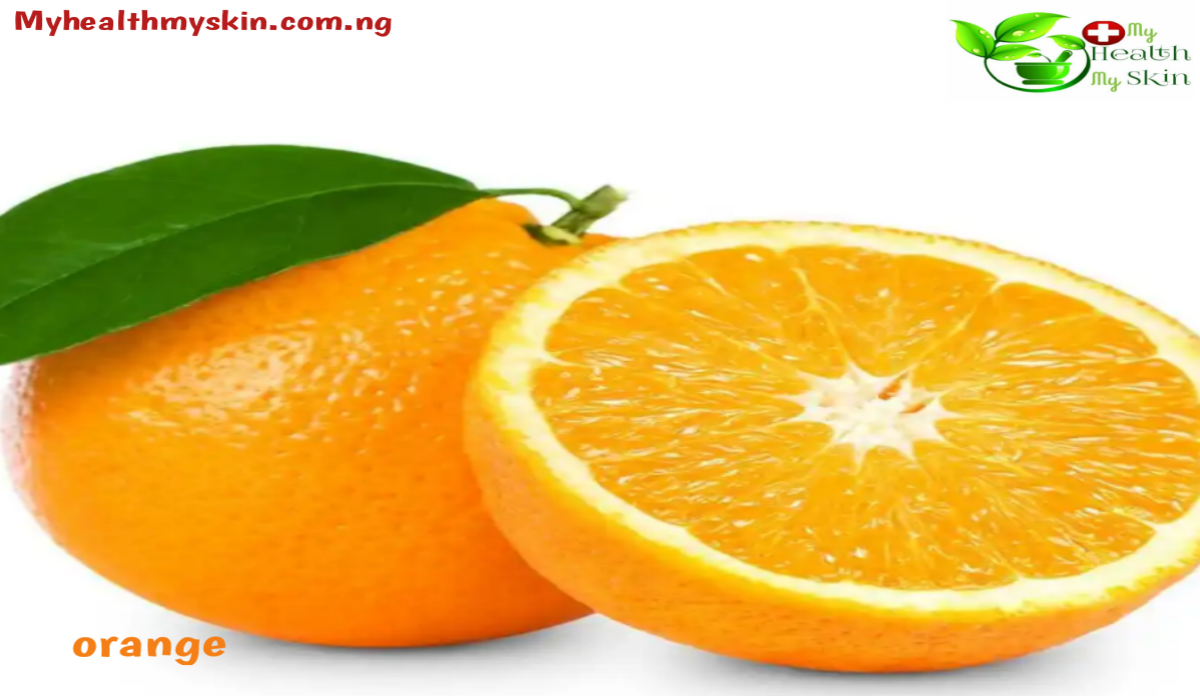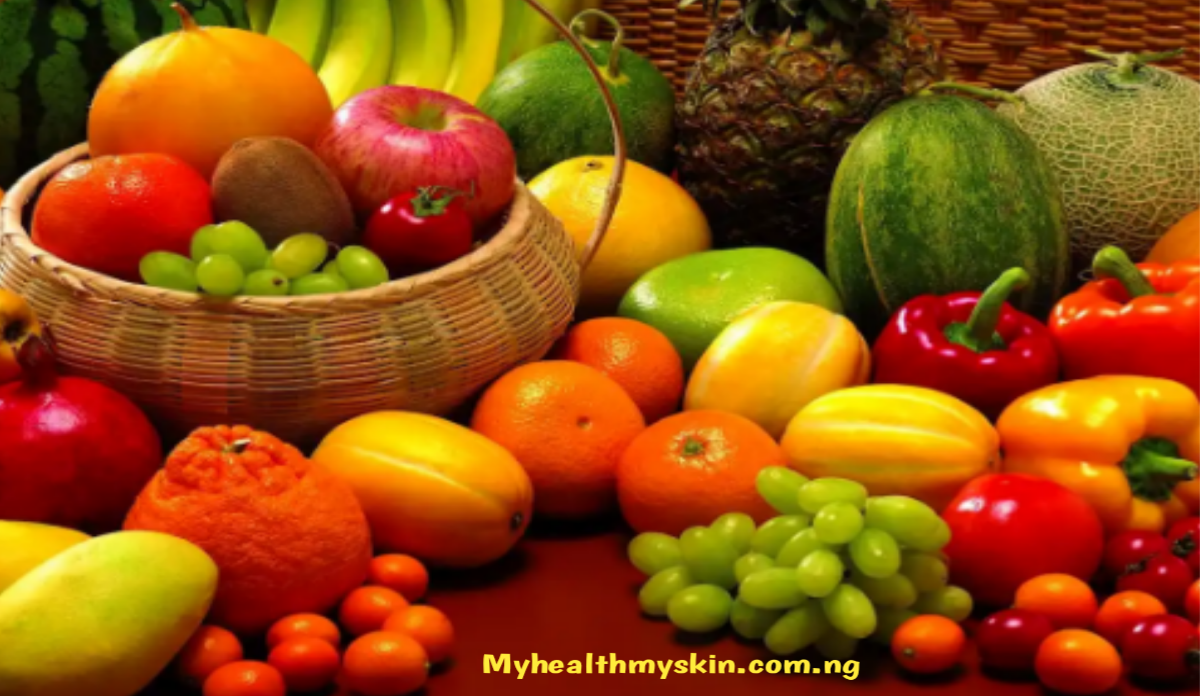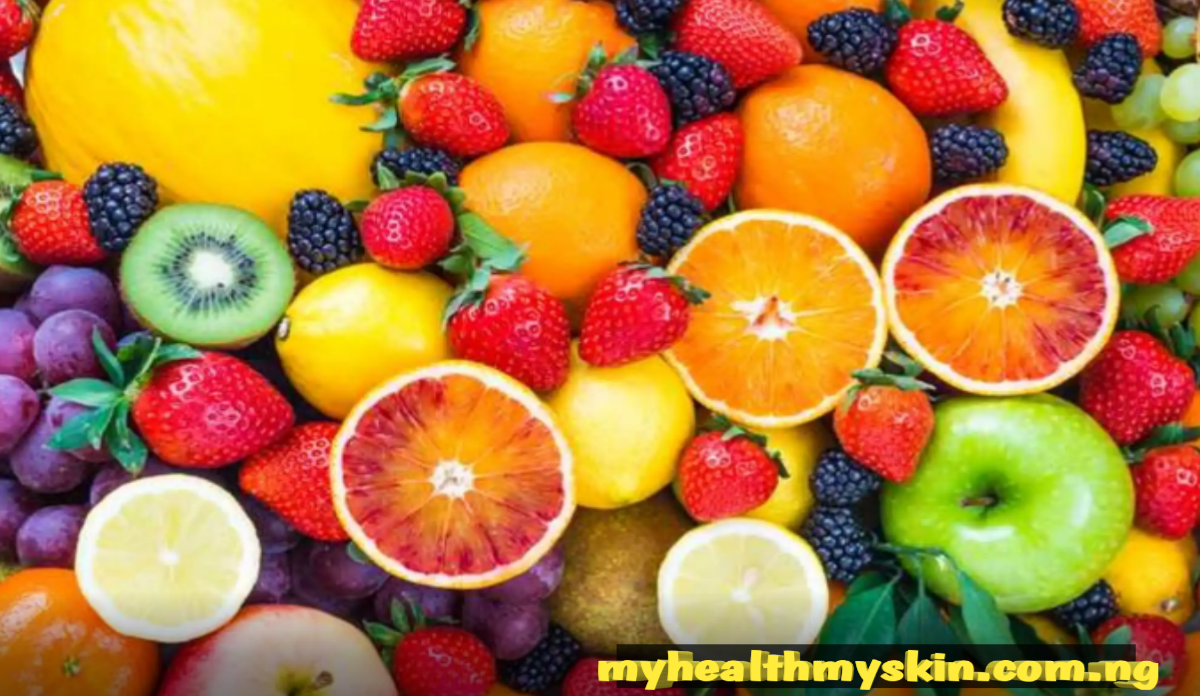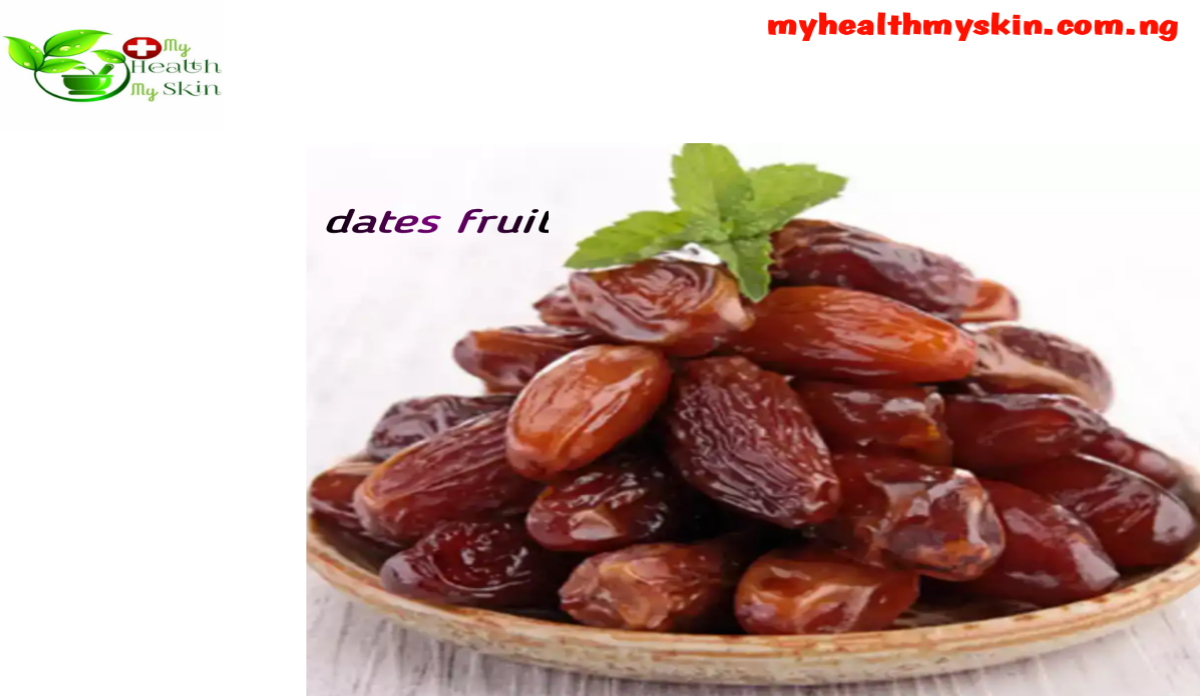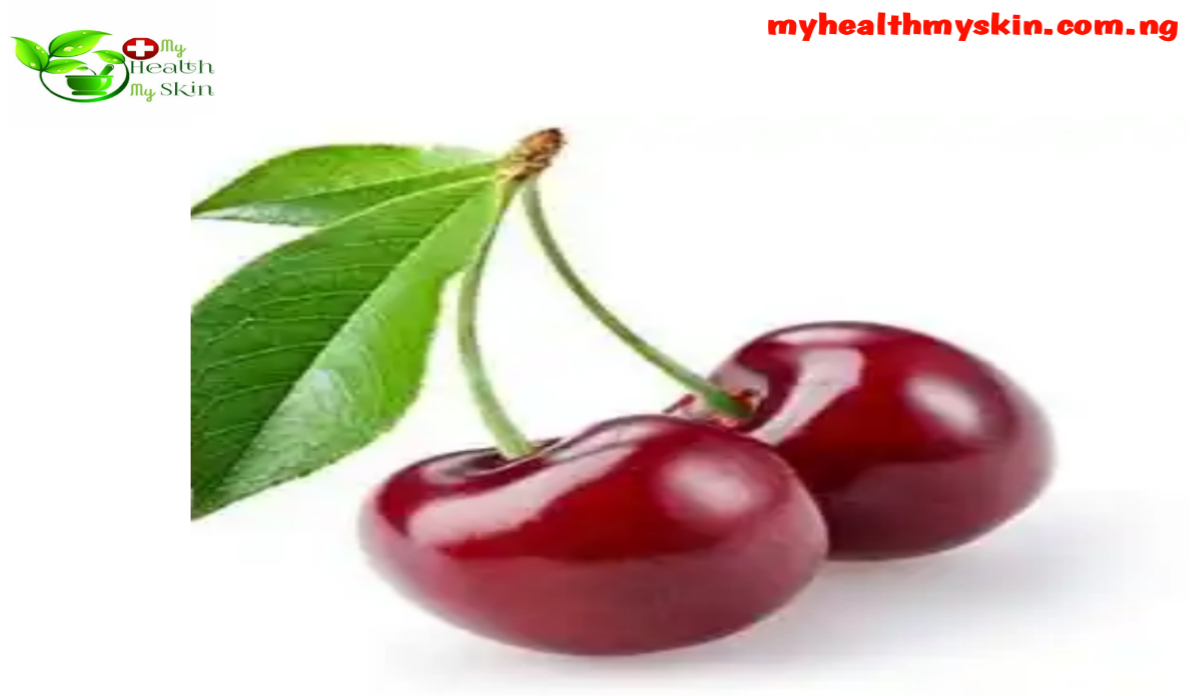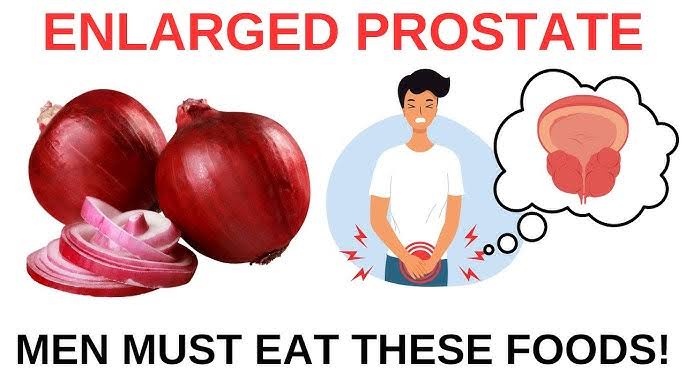Fruits and vegetables are an indispensable part of any kind of healthy diet as they provide us with the main nutrients, vitamins and minerals that the body needs to develop properly.
Generally we do not consume the recommended daily servings of fruits and vegetables, which results in consuming other foods in excess such as proteins and simple carbohydrates consequently leading to some deficiencies.
Prior to this post, we already did a post on a detailed guide to 31 different types of teas explaining it’s profiles, potential benefits And side effects, and all you need to know about teas.
Now, you must understand the different types of fruits and their benefits.
Nowadays, the world has globalized in such a way that nowadays it is easy to get any kind of fruit and vegetables out of their usual season, but we always recommend consuming each one in its typical season, since the quality is much higher.
A healthy and regular consumption of fruits and vegetables help us to prevent diseases such as high cholesterol, cancer, diabetes, and heart disease because all types of fruits vegetables are low in fat and contain a large amount of fiber.
For excellent health, eat at least five veggies and two fruits every day.
According to recent studies, a diet based on the consumption of vegetables, fruits, cereals and legumes is much healthier and richer than a diet based on foods of animal origin, this is another reason to increase the consumption of fruits and vegetables in our diet.
Both fruits and vegetables are low in fat and rich in fiber, so you can eat enough daily without worrying about the calories they provide. They are ideal for slimming diets, due to their low caloric intake.
Major benefits of fruits.
The following are some of the biggest advantages of fruits:
They are rich in fiber.
They help us to control our appetite.
They have a high satiating power. They help prevent constipation by improving intestinal transit.
They are draining and depurative, they detoxify the organism favoring the elimination of toxins.
They provide us with antioxidants and help us it to delay aging.
Different Types of fruits
There are 4 main types of fruits namely
Acidic, Semi-Acidic, Sweet and Neutral.
Under these four, fall all fruit varieties.
Acidic Fruits
These fruits are considered acidic generally because they have a pH level of 4.6 or lower.
From a nutritional point of view, acidic fruits help us to lower the levels of both high cholesterol and uric acid, are high in vitamins and minerals and help us to drain our organism.
They also provide us with beta-carotene and include the following fruits:
Kiwi🥝
Grapefruit
Lemon🍋
Apple🍎
Orange🍊
Pineapple🍍
Tamarind etc.
Kiwi🥝:
The origin of the Kiwi, technically known as Actinidia Deliciosa, is in New Zealand.
Belonging to the genus Actinidia, currently the best known cultivars around the world are the Hayward and Bruno.
There are 3 major botanical varieties, which are:
Chinensis
Hispida
Setosa.
Most of the current cultivated varieties come from New Zealand, so it is considered that there are female and male varieties.
Female varieties of kiwifruit are:
Abott
Kiwi -Bruno
Hayward
Monty
Kramer
Greensil
Allison
Vincent
Tewi
Gracie
Jones
Elmwood.
Male varieties are:
Matua
KiwisTomuri
M-3
M51
M52
M54
M56
Chieftain
Autari
In Spain, Hayward are the most widespread, although some later introduced clones such as Hayward K, Hayward 8 and Top Star, collected in other countries.
Types of kiwi fruit
Among the types of kiwi fruit, the 9 best known are:
Green Kiwi
This is the best known type of kiwifruit worldwide. High in vitamin C, it has a sweet taste with a touch of exquisite acidity. In some countries it is known as Kiwi Zespri.
Hayward Kiwi
It is a larger fruit, has a brown hairy skin, with small hairs. Its green flesh is very juicy and has a shelf life of about 6 months if well preserved.
Hayward Kiwi Clone 8
It is a hybrid originating from Greece, and its ripening process is faster than the others, having an excellent resistance to low temperatures and winter frost.
Kiwi Top Star
It is of medium size and has no hairs on the peel, even though it is a modification of the Hayward.
Summer Kiwi
It comes from several “controlled” crosses between several species. It has a much sweeter flavor, lighter weight and a much faster harvest time, which brings great economic benefits to its growers.
Abbot kiwifruit
Medium sized, it has a shorter shelf life than other types of kiwifruit.
Bruno kiwifruit
It is one of the types with less commercial impact, it is much less popular. But it has a higher amount of vitamin C, if compared to others.
Yellow kiwifruit
Yellow KiwiWith the scientific name Actinidia Chinensis, it has a much sweeter fruit than the Green Kiwi type.
There is no characteristic of sourness in its flavor and the pulp is intense yellow, not the usual green color. This species is the second most cultivated worldwide.
Kiwi Monty
Despite its small fruit, it is perfectly good in sweet taste, much less acidic than usual.
The above nine are the most popular varieties. Others include the following:
sweet has the particularity that the skin of the fruit is of a brownish-greenish color, with hairs. The pulp is very green, with a slightly acidic and perfumed flavor.
Jones
The fruits are oval in shape, with a fairly shiny straw-green flesh and a slightly acid and perfumed sweet taste.
Kiwi Hort 16
Kiwi Hort 16This medium-sized fruit is a variety that comes from the Yellow Kiwi.
The flesh is also bright yellow and has high concentrations of vitamin C, E and iron, making this variant a powerful and very commercial food option.
Kiwi A 19
It is very similar to the Yellow Kiwi, but with a substantial difference: the fruit is much smaller than its predecessor and is also more acidic. It became very popular in New Zealand.
Jin Tao kiwifruit
It is closer to the Kiwi Hort, although it comes from the Yellow Kiwi. Therefore, its flesh is also yellow, but with a smaller and sweeter fruit.
Kiwi Sun Gold
Kiwi Varieties – Kiwi Sun GoldAnother variant that comes from the Yellow Kiwi, with a sour flavor and a hairless skin. It is widely grown in New Zealand.
Kiwi Kiss
This variant of the yellow kiwifruit also comes from the yellow kiwifruit, but is larger in size. It was first cultivated in New Zealand.
Kiwi Soreli
Also derived from the Amarillo, it is resistant to low temperatures.
Grapefruits
The grapefruit tree (Citrus paradisi) is a subtropical citrus tree with enormous, acidic to semi-sweet fruit.
Grapefruit is a hybrid citrus (a cross between the sweet orange🍊 and the pomelo or shaddock) which originated in North America, having an internal segmented flesh that varies in color from pale yellow to dark pink.
Nutritional Properties
Grapefruit has 90% water, 8% carbs, 1% protein, and very little fat when raw (table). Raw grapefruit contains 33 calories per 100 grams and is high in vitamin C (40 percent of the Daily Value), but no other micronutrients are present in significant amounts.
Grapefruit juice has half the citric acid of lime or lemon juice and half as much as orange juice.
Grapefruit is one of the most popular citrus fruits and a magnificent food full of healthy properties for the body.
It contains a large amount of vitamin C, folic acid, magnesium, potassium, flavonoids and fiber.
It is very beneficial to take it on an empty stomach, either as fresh fruit or juice.
As it is a fruit with a lot of juice, a single squeezed grapefruit is enough to fill a glass.
Types of grapefruit
There are two major types of grapefruits, with each having different varieties:
The white or yellow grapefruit
The pink grapefruit.
Irrespective of the type or variety, they all have the same bitter-sweet characteristics which vary in intensity though.
White or yellow grapefruit.
This is the name given to the grapefruit variety whose skin and pulp have a pale yellow tone. It is possibly the most consumed variety, especially in juices.
This fruit, the white grapefruit, is a hybrid from the sweet orange (citrus sinensus) and the pompelmusa (citrus maximus).
The latter is also known as chinese grapefruit. If we compare a white grapefruit with pampelmusa, we will see that the former is smaller in size, with a more sour taste due to naringin (a flavonoid that provides health to the cardiovascular system) and its skin is thinner.
On the contrary, if we compare it with the orange🍊, we see that the white grapefruit is larger, with a more bitter taste and with less amount of skin.
The white grapefruit is a fruit of extraordinary quality, as it ripens on the tree and is harvested at its optimum point, so that it reaches your table freshly harvested.
It is characterized by its yellowish skin, juicy, nutritious and contains little acidity.
This variety is used mainly to make juices and among the varieties of white grapefruit we have:
Duncan
Marsh
White Gold
Duncan:
This is a marvelous sugar level regulator if yours are very high.
Its pulp is juicy and is used mainly for juice. It is the most consumed variety in the United States, where there is a great tradition of incorporating it into breakfasts.
Its fruit is large and flattened at the poles.
Marsh:
Marsh is somewhat smaller than the Duncan and has a large amount of juice, quite sweet. At the beginning of the season, its flavor is more acidic.
This variety is the most consumed in the world and is used in the industry for the production of juices. Its fruit does not contain seeds and its weight per piece is around 250 gr.
White gold:
It is white and very sweet, perfect to eat or use in salads.
White or yellow grapefruits have a lot of antioxidants and very few calories. This, together with the fact that 90% of the fruit is made up of water, makes it perfect to include it in diets to lose weight.
Pink Grapefruit:
The pink grapefruit varieties – or also called red ones – have lycopene. Its pigmentation is due to a component called anthocyanins. This substance is a very powerful antioxidant that is found in fruits and vegetables but rarely in citrus fruits.
Pink grapefruit is one of the sweetest varieties of grapefruit that exists. It mixes the bitter, acid and sweet flavors which causes an explosion of flavor on the palate.
Among its varieties we have: Thompson pink grapefruit. It is the first known variety of pink grapefruit, caused by a mutation of the Marsh variety, of which it shares the characteristics except the slightly pink color of its pulp.
Lemon🍋
It is a perennial plant of the Rutaceae family, a relative of the orange, the mandarin and the grapefruit. It is born from the cross between cedar and orange, whose widespread cultivation began in the tenth century AD, in the region of Sicily. It is characterized by the ability to flower and bear fruit several times a year.
The lemon is a more versatile product than it seems and it has more than 10 different varieties.
Types of lemon fruit
Although lemon is a product that can be easily found in any market or grocery store, the truth is that we know or pay little attention to its characteristics, qualities and varieties.
Meyer:
This lemon of Chinese origin is named after Frank N. Meyer, the first person who imported this lemon to the United States. The most curious thing is that this variety of lemon is a hybrid of lemon, orange and tangerine trees. It is characterized by its rounded shape and large size. The rind has a yellowish color, is smooth, soft and thin. It does not have a strong lemon aroma, but rather softer nuances and its pulp is very juicy and tender.
Eureka
The Eureka variety originates from California (one of its main producers) and is grown in Australia, South Africa, Argentina and Israel. This fruit is of medium size, with an elliptical shape and generally presents a small neck in the peduncular region. Its rind is of medium-thin thickness, usually smooth, except when grown in Mediterranean climates, which appears some roughness. It has an excellent juice content and high acidity. Its season is usually during the summer from June to September.
Lisbon
This variety is quite similar to the Eureka lemon variety in terms of juice content and high acidity. Its main difference is that its nipple is less pronounced and the texture is rougher. This American variety is believed to have originated from the Portuguese Galician variety.
Femminello
Represents Italian lemon production. The fruit depends somewhat on the crop, it is not always the same. The Femminello lemon variety encompasses different selections of lemons and has a medium size, very thick rind, low juice and high acidity.
Interdonato
The Interdonato lemon is large, elongated and has a smooth rind. It does not have a large amount of juice and its skin is thin. Nizza (Sicily) is the place of origin of this Italian variety.
Kütdiken
It is most commonly grown in Turkey and its characteristics are similar to those of Eureka and Femminello lemons.
Verna
It is of Spanish origin and is the second most important variety in Spain, after Primofiori, and ranks fifth in the world. Its production represents 20% and it is grown in the orchards of Alicante and Murcia.
It has two blooms: Harvest and verdelli.
These lemons are large in size, their flesh is tender and juicy, with lots of juice and moderate acidity. The verdelli variety has a smoother and thinner skin than the cosecha.
Primofiori or Fine Lemon
This is the most important and earliest Spanish lemon variety with an intense flowering; usually between April and May.
Its growing area is the Segura orchard.
Primofiori lemons are medium-sized, oval and have a thin, smooth rind.
The pulp has a pale tone, is very juicy, with high sumo yield and high acidity.
Villafranca
This variety of lemon has a high content of seeds inside, more than the Eureka, however they are very similar, so it is difficult to differentiate them at a glance.
Genoa
It is grown in the South American area and is characterized by a smooth rind, a good amount of juice and acidity.
Lapithkiotiki
Typical variety of Chile and the most important. It has a thin skin and juicy flesh, good juice and few seeds.
Monachello
It is a variety of Italian lemon with a late fruit and delicate to the climate. This type of lemon does not flower in all environments. For this reason, it is usually grafted with bitter orange so that the fruit can proliferate.
Verdelli
It is the second flowering belonging to the Verna variety.
It blooms in the months of August and September and the fruits are harvested in the summer of the following year.
We include it as a separate variety because there are significant differences in the composition and characteristics of the Verna and Verdelli class. For example, the skin in the Verdelli variety is thinner and smoother.
Not all lemon varieties are the same: texture, flavor, aroma, color, amount of juice or acidity are the main differentiating factors.
Types of Apples
Ralls Genet:
genet is a type of apple used in the breeding of more modern apples such as the Fuji. Its cultivation was popularized by Thomas Jefferson, the third president of the United States, although it was actually Edmond-Charles Genet who gave this variety to the president, hence its name. Its color varies between red and yellow, its skin is shiny and its texture is crunchy. Valid both for eating raw and for cooking.
Fuji:
the fuji type of apple comes from the crossing of two American varieties Ralls Genet and Red Delicious. It is actually a clone made in the city of Fujisaki in Japan, hence its name.
Its flavor is sweet, its texture juicy and crunchy. The color can vary but ranges from red to pink. When bitten, it soaks the mouth with the fresh water it contains. It is highly recommended for use in salads and pastries, being very sweet it is also a perfect choice for eating raw.
Golden:
This cross specie has its origin in the state of Virginia (USA) and was discovered by Anderson H. Mullins in 1980.
Its wild ancestor is found in Kazakhstan. It has a yellowish color with golden touches. It also stands out for its acid taste that disappears when ripe, becoming sweet and its crunchy texture. The best way to introduce it in meals is in desserts such as cakes or biscuits.
The variety of this type of apple is very wide. We can find in the market some specimens such as Golden Delicious Cosel (Virginia), Smoothee (Pennsylvania) and Golden Badami that come from the United States; Golden Reinders and Golden Crielaard, which are Dutch apples; Golden Lapins, which comes from Canada; or Pink Gold, Lyros or Rosagold, which are the French varieties.
Granny Smith.
granny smith is an apple with a grandmother: Maria Ann Smith Sherwood, the woman who popularized this apple variety in Australia in the middle of the 19th century and who gave it its name. Its color is green and its texture is crunchy, due to its thick skin and hard flesh.
It is considered one of the most acidic types of apples in existence. It oxidizes very slowly, making it perfect for use in salads, tartares or pastries. It usually gives a fresh touch to dishes.
Reineta:
The most common is the Canadian, although it has its origins in 16th century, France. It is large and flattened. Its color spectrum can range from yellow to gray to greenish tones. It has spots and a rough touch. It has a sweet and sour taste, it can have an aftertaste of green walnut according to El Comidista. It retains its flavor after cooking, making it a good choice for baking recipes.
Red Delicious:
red delicious appeared in 1880 in Iowa (USA) and has sub varieties such as Red King or Top Red.
It is quite large, compared to other apples. Its color is deep red, its skin is shiny and thick and its flavor has an acid touch. It falls apart very quickly, so it is not recommended for roasting. However, for eating alone, in salads or mashed, it is a perfect choice.
Starking:
starking was popularized by the Stark Brothers nursery in Louisiana (USA), we could say that it is a cousin of the Delight. Its color is red, its striped skin is very shiny and its flavor is sweet. It is one of the most popular, and the best choice for roasting, mashing or stewing.
Gala:
This specie was created in Australia by crossing different varieties including Golden and Delicia. Red on a green background, its flavor is acidic and its texture is hard and crunchy.
On the red skin, its orange striations stand out. It is perfect to combine with fish or red meats, as well as being a perfect accompaniment to cheese🧀, although it is recommended to be eaten raw.
Royal Gala:
royal gala is of oeanic origin (New Zealand) this type of apple, arises after the crossing of the varieties Kidd’s Orange Red and Golden Delicious.
Its name comes from royalty and is named in honor of Queen Elizabeth II of England, who by the Commonwealth (English commonwealth kingdoms) is also symbolic Head of State of New Zealand, country of origin of this type of apple. It has a color between red, orange and green on the outside and white inside. Its shape is rounded and its texture is crunchy, juicy and tasty.
It is very versatile as it can be eaten raw, used in purees or as an accompaniment to roasts.
Lady William:
this a very sweet apple with a history.
Arthur Williams’ youngest son Ronald, decided one day to chop down the apple tree next to the family home. Arthur’s wife transplanted the apple tree and managed to save it. Eventually the apple tree produced a new variety of sweet tasting apples which they named Lady William, in honor of the woman who saved their lives. This apple is the ancestor of different apples known around the world, such as Pink Lady or Cripps Pink.
Cripps Pink:
cripps pink is a large, cone-shaped apple. Its color is deep pink on the surface and light green on the bottom. Its texture is tender and fine, not too juicy. It keeps quite well at room temperature, which makes it very versatile in cooking.
Pink Lady:
This is another type of apple that comes from the oceanic continent, in this case from Australia. It is a cross between Golden Delicious and Lady William’s apples.
The color is pink on a greenish-yellow background. Its flavor is acidic and its texture is hard and crunchy. Like the Gala, it is perfect to combine with fish and fatty meats or with cottage cheese and different cheeses.
McIntosh:
This breed owes its name to the discoverer of the apple tree that bore this fruit: John McIntosh. Found in 1796 in Ontario, Canada, it is round, reddish in color with hints of green.
It is medium sized, crunchy texture with acidic and juicy flavors at the same time.
The orange is an almost ubiquitous fruit in our greengrocers, it can be found both in summer autumn, winter or spring.
Types of Oranges🍊
There are about 300 varieties of oranges in existence. In any case, in the commercial world, there are barely 30 varieties offered, of which only a dozen are the most common on our table.
However, these 300 varieties fall into three large groups, which also largely define their origin. Inother-words there are three main types of oranges:
Navel
White (smooth)
Blood (“Sanguinello”, native to Spain)
Navel: best for table orange🍊
Navel and this fact already gives us a clue to the main characteristic of this group of varieties: they have one of the ends topped by a kind of navel-shaped closure. Navels, moreover, tend to be large oranges, with rough skin and considerable thickness.
Regarding the pulp, they have large and generous segments, they are juicy and high in insoluble fiber, having fewer seeds unlike other types, which makes them more suitable for table oranges than for juicing.
Within the group of navel there are different varieties adapted to each time of the year, some of them include:
Washington
Navelate
Navelina
Washington is the oldest and is collected in early November. It is characterized by being very fleshy and sweet but having little juice, which is why it is losing commercial strength.
It is been gradually replaced by others which spread more.
Navelate is very similar to the washington but smaller and more resistant to cold. It is harvested from December until the beginning of May, since it is very strong while it is in the tree.
This allows them to have a good part of the winter.
Navelina is perhaps the most commercialized table variety currently and is characterized by being very early, since it is harvested from the beginning of October to the middle of October. It does not have seeds but with enough juice, as well as thinner skin. It is fleshy and very sweet, making it most ideal for a table orange.
White (also called smooth, specially for juices).
This class of oranges🍊 are distinguished from the navel because they do not have the navel shaped end and their skin is smoother and thinner, with its maturation time later than that of navel.
They also tend to have more seeds in the segments, with the color ranging from pale yellow to intense orange. Some of its varieties include:
Valencia
Salustiana
Late valencia
Verna
White can be used both for eating and for juices, but the varieties designed for juice stand out, such as Valencia.
Valencia has very thin skin, a lot of juice, little meat and hardly any seeds. It is also very acidic. It is the typical orange that is sold in mesh on the juice shelves.
A derivation of this is the late valencia which ripens from mid-spring to mid-summer, providing oranges for these times. It is also acidic and ideal for juices.
Salustiana is another smooth variety that gains market share, and matures from mid-winter to mid-spring. It is a flattened orange, with sweet juice and little seed, as well as not very fleshy, ideal for juices.
The verna is another variety to highlight, since it is the latest of the group when it is collected at the end of summer.
Blood Orange🍊
The blood orange is a variety of orange (Citrus × sinensis) with crimson, almost blood-colored flesh.
The distinctive blood color flesh is due to the presence of anthocyanins, a family of polyphenol pigments common to many flowers and fruit, but uncommon in citrus fruits.
Chrysanthemin (cyanidin 3-O-glucoside) is the main compound found in red oranges. The flesh develops its characteristic maroon color when the fruit develops with low temperatures during the night. Sometimes, dark coloring is seen on the exterior of the rind, as well, depending on the variety of blood orange.
The skin can be tougher and harder to peel than that of other oranges.
Blood oranges have a unique flavor compared to other oranges, tasting distinctly like raspberry in addition to the usual citrus notes.
The anthocyanin pigments of blood oranges begin accumulating in the vesicles at the edges of the segments, and at the blossom end of the fruit, and continue accumulating in cold storage after harvest.
The blood orange is a natural mutation of the orange, which is itself a hybrid, probably between the pomelo and the tangerine. Within Europe, the arancia rossa di Sicilia (red orange of Sicily) has Protected Geographical Status.
Semi-Acidic Fruits.
They provide us with a large amount of antioxidants, and help the body to drain, avoiding fluid retention.
They include the following:
Strawberry🍓
Lime
Tangerine
Mango🥭
Cashew
Peach🍑
Nectarine
In some cases tomato is also considered a semi-acid fruit.
Sweet Fruits.
From a nutritional point of view, sweet fruits are especially rich in vitamins and minerals, they are very healthy and provide us with a higher glycemic index and are rich in antioxidants as well.
They are not compatible with neutral fruits or acid fruits, we must mix them with each other.
Sweet fruits include the following:
Dates
Apricots
Anon Cherry🍒
Custard apple🍎
Pomegranate
Currant
Soursop
Guava
Fig
Apple🍎
Melon🍈
Loquat
Papaya
Pear🍐
Pitahaya
Watermelon🍉
Plum etc.
Dates
This is a fruit with unique characteristics and above all, sweet and rich in insoluble fiber.
We can find them especially in markets and specialized stores and can also be used as an ingredient in many recipes.
It is usually considered a dried fruit but the truth is that the date is left to ripen and dry on the plant itself. The largest producers and exporters of this appreciated fruit are: Morocco, Pakistan, Saudi Arabia, Iraq and Algeria.
Nutritional properties:
Dates are rich in antioxidants such as vitamin A, C and E, very nutritious and especially energetic, being ideal for athletes, so it is not recommended for those who follow some type of weight loss diet since it provides almost 250 kcal for every 100 grams.
They prevent heart disease and above all it provides a great variety of minerals such as iron and magnesium and vitamins of group B and A among others.
They are also ideal for vegetarians and for those who suffer from anemia, the magnesium provided by dates helps combat symptoms of stress, tiredness or fatigue.
The vitamin A provided by the date helps to prevent hypertension and also stimulates the different functions of our brain.
Dates are free of cholesterol and are capable of regulating bad cholesterol levels, they do not raise blood sugar levels and are a low glycemic index food.
They also help us regulate the entire digestive system due to the high content of soluble and insoluble fiber.
Types of Dates fruit
Dates are generally classified based on their texture and consistency depending on the ripening times, which invariably affect their flavor, hence we have:
Soft dates, semi-dry dates and dry dates.
Tender dates are usually sweeter, containing a greater amount of sugars, although almost all types of ripe dates have a high percentage of sugars, which is why they are very caloric and an important source of energy.
Deglet Noor.
This type of date is highly appreciated, it has a shiny skin with light tones and slightly wrinkled. It can be eaten naturally and is an exquisite ingredient in many recipes, both salty and sweet.
This date, as it does not have a very high humidity, is preserved for a long time without the need to be in a refrigerator.
Medjool
Highly valued for their size and flavor, some dates can reach 5cm in length. This date is very sweet, tender and juicy. When ripe, this fruit is dark in color, wrinkled and soft, making it easy to peel off its skin.
They are excellent for pastries and sweets. They are usually crushed without the bone in this way, a tasty paste is obtained that can replace sugar and even honey for the elaboration of different recipes. A small curiosity about this type of date was that in Morocco it was reserved only for royalty.
Khadrawy
This type of date is smaller but still is even somewhat juicier. It should be noted that this date is very soft and very sweet so it can be reminiscent of honey. The moisture inside when this date has matured at its optimum point, the skin takes on a dark color and the texture becomes somewhat dry.
Halawy
It is a medium sized date with a smooth skin when it reaches its ideal point of maturity.
It is delicate, semi-moist, light amber in color and tastes sweet, as the name implies.
The first commercially available Halawy offshoots were from Barsa, Iraq, in 1913.
They are the second most common form of palm found in southern Iraq, and they are regarded as the best variety exported from the region.
Neutral Fruits
These are mainly dried fruits except for avocado, which is a neutral fruit. All of them have one thing in common: they provide us with healthy fats for our organism.
Avocado, almond, hazelnut, peanut, cocoa, chestnut, coconut, coconut, macadamia and walnut.
Vegetables
The benefits of vegetables are many and very different since they provide us with vitamins, minerals and very different nutrients.
Mainly they provide us with a high fiber content, so they help us to have better digestion preventing constipation, favoring the correct elimination of toxins and also provide us with essential amino acids for the body.
Types of Vegetables
There are 4 different types of vegetables and we classify them according to their growth.
Core Vegetables: They include eggplants, tomatoes, cucumbers, zucchini, lettuce, arugula, artichoke, asparagus, cardoons, watercress, soybeans, corn, beans, chard, spinach, cabbage, peppers, kale, etc.
Bulb vegetables:chives, leek, onion, garlic, garlic, turnip.
Root vegetables: Potato, sweet potato, carrot, beet, radish, celery, ginger, bamboo, yucca.
Cruciferous vegetables: cauliflower, cabbage, broccoli, brussels sprouts, romanesco cabbage, bimi, etc.

